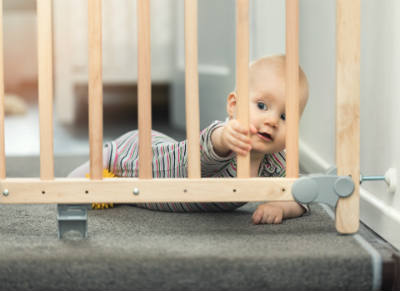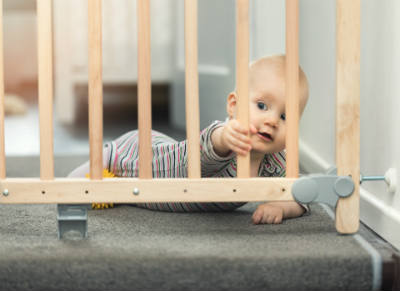Your toddler is curious – which is great, because his or her curiosity fuels learning. But, it’s crucial to protect your child as he or she explores the world to prevent injury. To help, Parents.com has identify 25 danger zones in a typical home, providing solutions to protect your little ones.

For example, the toilet – with its few inches of water – presents a safety issue. To protect your child from drowning, put a latch on the seat of all your toilets, and keep them closed. In your living room, frequently check the cushions of your recliners, sofas and armchairs to find change and other choking hazards that your toddler can find, then swallow. This is especially important after guests leave. In the kitchen, refrigerator magnets also present a choking hazard when they’re within reach. So, either avoid small magnets or ensure they’re up, out of your toddler’s reach. You can read the entire article for 22 more useful tips.
Other safety issues exist around scalding and burning, with the Centers for Disease Control and Prevention providing tips for toddler safety. For example, make sure you install smoke alarms on every floor of your home, including near the rooms where all of you sleep. Test these alarms monthly and use long-life batteries in them. Create an escape plan in case of fire, and make sure everyone in your family can identify two ways out of every room. Let your toddlers know where you would all meet outdoors in case of fire. Also, cook with care.
A second article by Parents.com shares ten serious hazards that can harm your child, including scalding water. Hot water, the article shares, can burn skin just like fire can. In fact, if bathtub water is at 140 degrees, your toddler can be scalded in under five seconds, so check your hot water heater. Make sure it’s set to 120 degrees Fahrenheit and always test bathtub water before allowing your child in the tub.
Then there are environmental pollutants. Never smoke – or allow someone else to – in your home. Use exhaust fans in your bathrooms and kitchen to manage humidity levels, and use a dehumidifier in the basement to protect against the growth of mold. If your carpet or furniture gets damaged by water, remove immediately. Finally, keep your doors and windows open when cleaning, laying new carpet or painting. You can read the entire article for more information.
Next on the list: safety issues related to poisoning. The Centers for Disease Control and Prevention shares tips on how to keep poisonous substances out of the hands of curious toddlers. They include storing medications and household products in cabinets where your child can’t see or reach them. When you take them out, don’t place them within reach of your children, even for a short time. Make sure all child safety caps are tightly closed, every time, and put the bottles out of reach and sight again as soon as possible.
If you have any reason to suspect your child ingested something potentially poisonous, call the poison help line immediately: 800-222-1222. Keep this number handy. It is open 24/7.
Finally, SafeKids.org provides toddler safety information on a broad range of subjects, from carbon monoxide to battery safety, and from passenger safety tips to playground safety tips and much more. Overall, the biggest tip is to remain alert to potential hazards and proactively create a safety plan.




